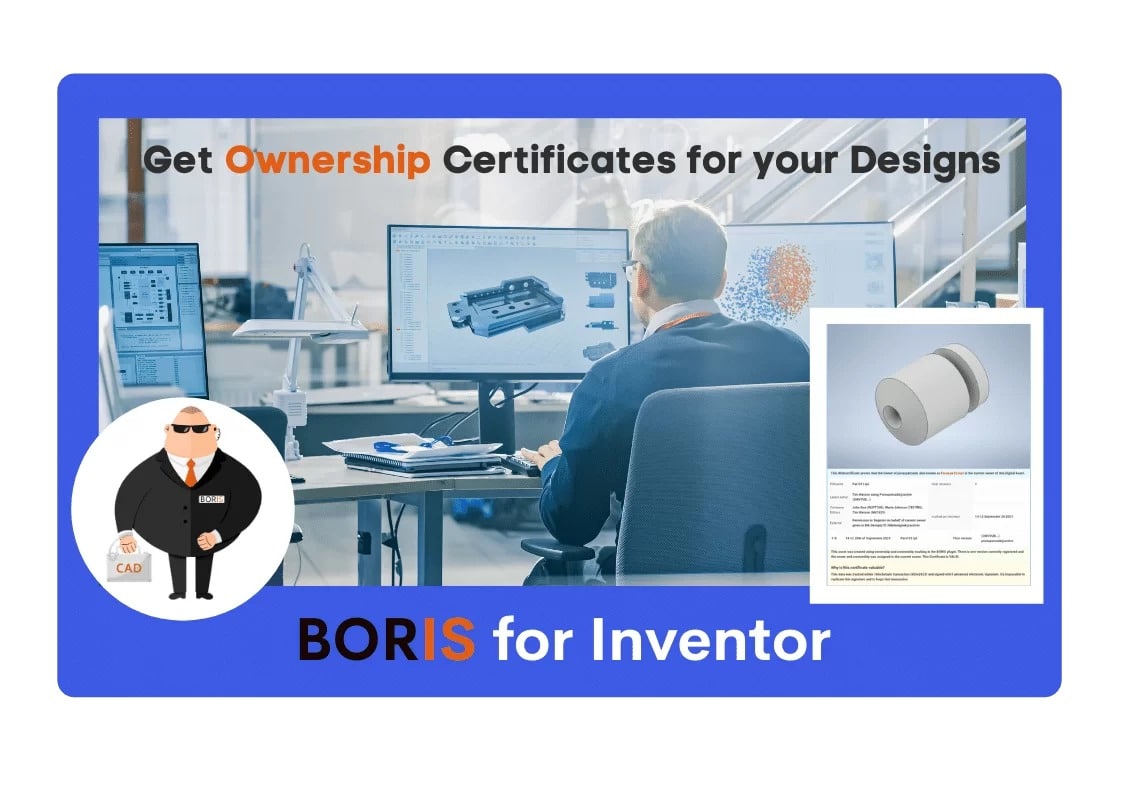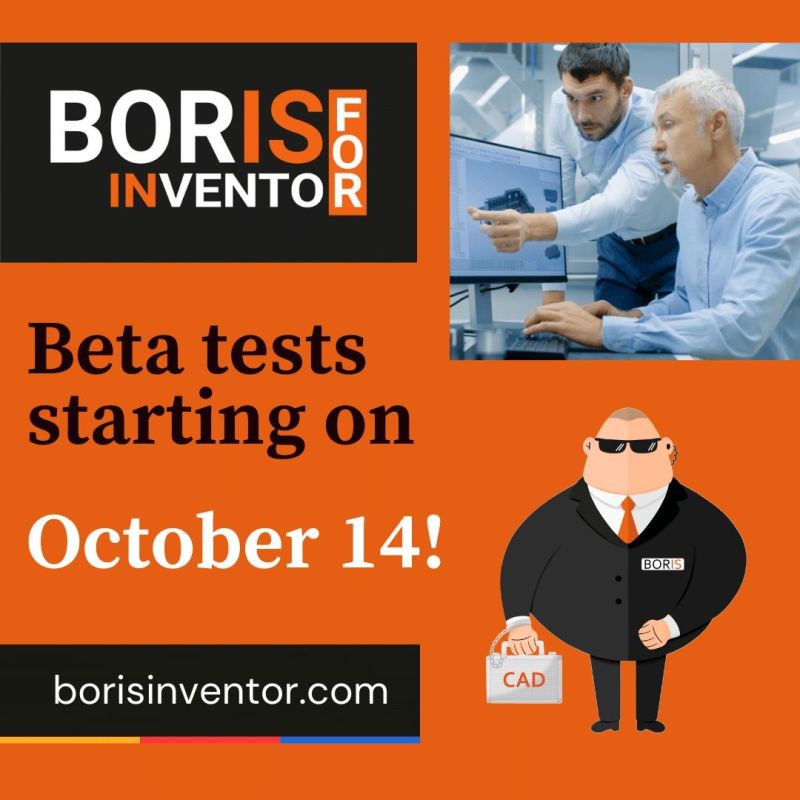As all AM industry operators know well, sharing CAD data is risky to IPs and businesses. Starting with the registration of authorship, the new BORIS plugin from CADChain for Autodesk Inventor accompanies a designer’s creations through the design phase, providing safety, security, and peace of mind. The free-to-join beta testing program is now open for registration and begins on October 14th.
CAD files are shared with employees, external collaborators and commercial partners; they can be reverse-engineered or leaked accidentally. It’s challenging to continually track who has access to a sensitive CAD file. Equally challenging for CAD file creators is to retain control of their intellectual assets, and proving authorship and ownership once the file leaves the environment it was created in.
Risky exposure of IP and precious assets increases in the shared economy. In manufacturing, 94% of all cyber-attacks are from industrial espionage and cyber-theft of trade secrets. Security protocols are costly and never 100% secure. Traditional IP Law Protection is often regional, expensive, time-consuming and can be ineffective. Traditional IP law practice can be far behind the reality of today’s digital market; in many cases, it does not provide adequate protection against misuse and misappropriation of CAD data.
While legal instruments for IP protection are adapted or introduced, technology-driven innovation and authorship continue to outpace these. Legal agreements can be breached and they can easily be inadequate to cover all parties. Traditional legal contracts, such as non-disclosure and licensing agreements, often give a false sense of trust and complicate the negotiation process.
They do not provide active protection against violations either. And it’s not easy to monitor what third parties do with your data. The traditional legal system has practical challenges and limitations, as the burden of proof lies with the infringed party.
Tricks and techniques to protect digital files are weak and lead to mistakes. Trying to protect CAD files by changing the file format, converting to pdf, or sending only one part of a file, results in partial loss of data and geometry alienation. This leads to mistakes and lost time.
Even storing sensitive data in a Digital Vault does not ensure full protection. In every company, sensitive documentation is stored in digital vaults such as OneDrive, Box, File Servers, SharePoint, Office 365, etc; however, even with access controls, once downloaded, files leave this protected environment and become vulnerable.
Manufacturing on Demand
The CADChain blockchain solution
Blockchain software startup CADChain addresses the problems with sharing CAD data by providing certified proof of ownership and creatorship of CAD files, registered directly on the blockchain, right from within Autodesk Inventor software.
The first of many more solutions to come from CADChain, BORIS is a plugin for Autodesk Inventor. It creates a digital twin of the CAD files and stores data related to these files on the blockchain. A digital fingerprint of the original files unites the CAD object ID and the owner/creator ID, which serves as timeless and immutable proof of creation and ownership.
The identity of every BORIS account is verified, ensuring certified representation and because BORIS works its magic within Autodesk Inventor, then authorship is also certified. This is extremely important because BORIS ensures “first in time” registration for any intellectual asset, which automatically ensures “first in right” to IP.
Users get a Verifiable Certificate of ownership for each 3D model, which is a shareable certificate, like a web link or downloadable PDF. A web certificate is derived from the actual data on the Blockchain and is a verified proof of your ownership by hashes and proof of transactions. The shareable PDF certificate is a file that represents the same data and contains an additional functionality for verification to prevent tampering with printed or shared PDF Certificates.
It’s impossible to forge a CADChain certificate. It’s available in two formats. One is a public version, containing general information and a screenshot (if the user enables this option), but hiding any sensitive information.
The other is a private “owner” version, which can also be shared with approved third-parties such as collaborating contractors or clients. This version includes all important data.
With the certificate users can prove that they are the creator, owner, or authorized rights holder of a CAD file. They can transfer assets to a new owner, manage the creative process by Tracking ownership of CAD files, Identify company assets, control and track the file versions
The Autodesk Inventor BORIS Beta Programme
It is now possible to become an early adopter and pilot the BORIS solution before it becomes an industry game-changer. Joining the Beta program is free, and Beta program participants benefit from installation and integration support from our tech team, as well as discounts on the first commercial version. Interested participants will be selected by CADChain and informed about next steps beginning October 14th, 2021.
If you are a designer or engineer, working freelance or for a company, and you use Autodesk Inventor software, you are invited to apply to the first Beta test of our Blockchain solution, BORIS for Inventor. You will be able to try a new solution that leverages the security and power of blockchain technology, fully integrated in your Autodesk Inventor’s workflow. It is a unique opportunity to understand how BORIS for Inventor can benefit your business, without paying for the discovery and learning stage
The CADChain team of engineers will work with you to integrate and set up the solution to work seamlessly with your Autodesk inventor software. Special benefits, including discounts on adopting the commercial product, once it is launched. Beta testing begins on October 14th, 2021.
* This article is reprinted from 3D Printing Media Network. If you are involved in infringement, please contact us to delete it.
Author: Davide Sher



Leave A Comment